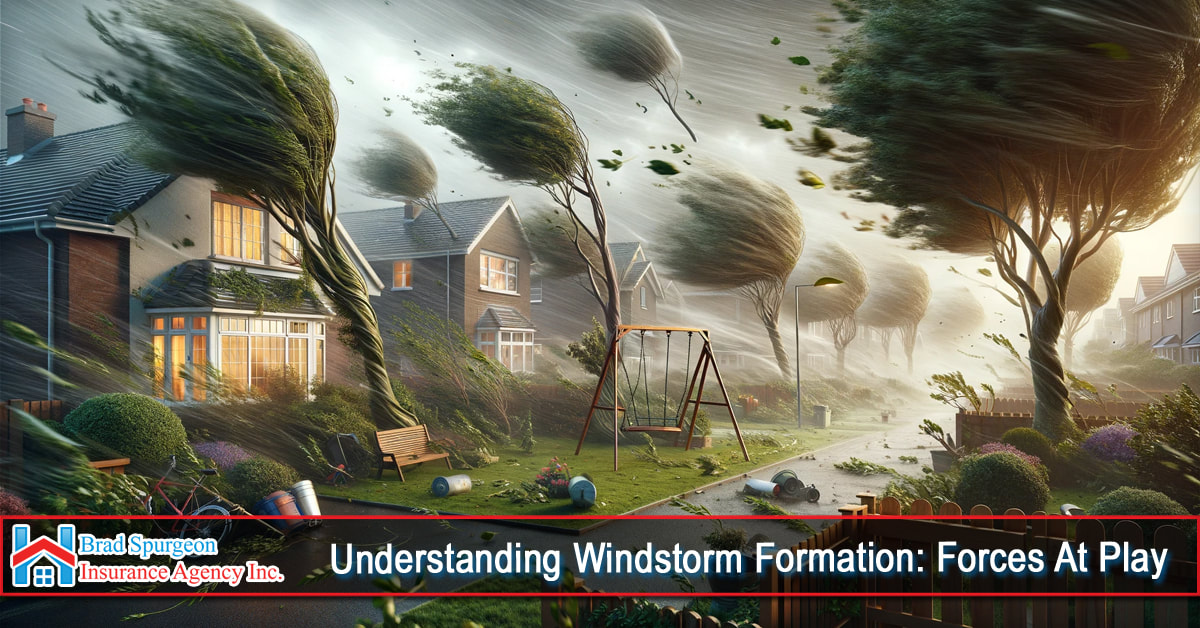Windstorms, including hurricanes, tornadoes, and severe thunderstorms, originate from complex atmospheric processes. Here are the fundamental forces at play:
- Temperature Differences: Windstorms often begin with variations in temperature. When warm, moist air masses collide with cooler, drier air masses, it creates instability in the atmosphere. This temperature contrast sets the stage for windstorm formation.
- Atmospheric Pressure: Differences in atmospheric pressure play a crucial role. Low-pressure systems can draw in surrounding air, causing it to rise rapidly. This upward motion leads to the formation of thunderstorms and, in some cases, more severe windstorms.
- Moisture Content: Moisture in the air is another critical factor. High humidity levels provide the necessary fuel for thunderstorms and hurricanes to develop. As moist air rises and condenses, it releases latent heat, further intensifying the storm.
- Wind Shear: Wind shear refers to changes in wind speed and direction with altitude. Significant wind shear can create conditions conducive to tornado formation within thunderstorms. When wind shear is present, it can lead to the rotation of the storm, spawning tornadoes.
- Ocean Temperature: For hurricanes, warm ocean water acts as a heat source. When sea surface temperatures exceed a certain threshold, it can trigger the formation of tropical storms, which may later develop into hurricanes.
Windstorm Insurance Protection:
While understanding windstorm formation is essential, it's equally crucial to safeguard your property and finances against potential windstorm damage. Windstorm insurance provides the financial protection you need in the event of windstorm-related losses. Here's how windstorm insurance can benefit you:
- Property Coverage: Windstorm insurance typically covers damage to your home and personal belongings caused by windstorms, including roof damage, structural issues, and interior damage from wind-driven rain.
- Additional Living Expenses: If your home becomes uninhabitable due to windstorm damage, this coverage helps with temporary living expenses, such as hotel stays or rental accommodations.
- Liability Protection: Windstorm insurance often includes liability coverage, which can be essential if someone is injured on your property during a windstorm event.
- Special Deductibles: Windstorm insurance may have separate deductibles specifically for windstorm-related claims, which can help you manage your out-of-pocket costs.
Conclusion:
Understanding the forces at play in windstorm formation is the first step toward preparedness. However, no matter how knowledgeable you are about windstorms, the best protection comes from having adequate windstorm insurance coverage. By combining your understanding of windstorms with the right insurance policy, you can ensure that you and your property are well-prepared for the forces of nature. Don't wait until the next windstorm threat—take proactive steps to safeguard your home and financial security today.
At Brad Spurgeon Insurance Agency Inc., we aim to provide comprehensive insurance policies that make your life easier. We want to help you get insurance that fits your needs. You can get more information about our products and services by calling our agency at (409) 945-4746. Get your free quote today by CLICKING HERE.
Disclaimer: The information presented in this blog is intended for informational purposes only and should not be considered as professional advice. It is crucial to consult with a qualified insurance agent or professional for personalized advice tailored to your specific circumstances. They can provide expert guidance and help you make informed decisions regarding your insurance needs.

